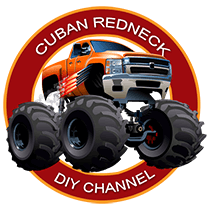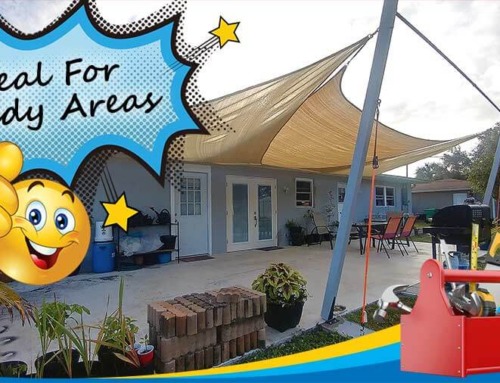Without a doubt, a well-designed mudroom or laundry room drying rack can be quite useful. That is particularly true in a small home-like mine. When we first moved into our Southwest Florida home, the laundry room was just an empty room in need of attention. While getting a new washer, dryer, and other things took priority, many of the little things didn’t get addressed! Fabricating a laundry room drying rack and shelves is something I am just getting around to doing!
When designing and building this drying rack for the laundry room, I had several design goals and needs to meet. For one, the material! The existing cabinets (premade units from Lowes) are red oak with a clear coat. That automatically disqualified using cheaper woods like pine and or even poplar. Not being intrusive or in the way when not in use was another criterion to meet due to the room’s size. That’s why a wall-mounted rack that folded away was vital.
Laundry Room Drying Rack Material List
As with many of my projects, the goal is to inspire beginners to make something they can be proud of and be price-conscious. Not only that, but making this out of African Blackwood, Ebony, Sandalwood, Brazilian Rosewood, or Bubinga, as many on YouTube seem to prefer is unnecessary for this purpose. This complete disregard for a budget is one reason I started the Cuban Redneck DIY channel in the first place. Here are the materials I use on the Laundry Room Drying Rack video.
- 1X 1-in x 2-in x 8-ft Square Unfinished Oak Board (know that the actual size is: 0.75-in x 1.5-in x 8-ft)
- 3X 1.5-inch hinges (make sure they not wider than .75 in the close position and magnetic!)
- 1X 5 ft. X .5 inch copper pipe
- 2X .5 inch copper end caps
- 4X Garment Hook (100% optional)
- 1X can of clear lacquer spray or rub on poly
Laundry Room Drying Rack Fabrication:
Although there were several things I did not take into account in the original design, building this laundry room drying rack was as simple as the material list. The first step is to cut the backboard or plate. Because I am using a precut copper pipe, that dictates the width of the clothes drying rack. With the two caps in place, I cut my backboard to the distance between the end caps, minus an additional quarter of an inch.
We then need to make the stop limiters for our folding arms. These small pieces limit how much the arm travels downward and offers support when we hang stuff on the crossbar (copper pipe). I miter mine at 45 degrees, but I think it would have been best to use a round-over bit. The 45-degree cut took away a lot of material and made the stoppers weaker with no added benefit.
The piece of material I have left from my 8 ft piece is about 33 inches long, and I cut that into three equal parts. We are going to use these for our arms. Anything between 10 and 12 inches is ideal since most clothing hangers in the market are about sixteen inches wide or eight-inches on center! These pieces need to be bored on one end with a .625 inch Forstner bit. Once you do that, there will be very little material left around the hole. Although this is red oak, there is a high possibility of it breaking. For this reason, I trimmed all three right in the center of the hole, leaving me a 180-degree contact area instead of 360 but still quite adequate.
With all of our wood pieces cut, I gave them a quick sanding using a 150 grid foam block and turned my focus to the metal parts. For the hinges, all we need to do is drill a hole on one of the leaves big enough to accommodate whatever size magnets you use. I am using 5mm X 3mm neodymium. For the copper pipe, we are making a countersunk hole centered with each of the arms.
Assembling the DIY Laundry Room Drying Rack
The assembly part is pretty straightforward. I started by bringing all my pieces to my Harbor Freight workbench so that I can mount the hinges to the end of the arms on top of a flat surface. I then proceeded to mount the arms to the backboard using the hardware that came in the package. I use a square and a clamp to hold each arm straight while I secured the stop limiter with plenty of wood glue and a couple of brad nails. Using an additional square and clamps to hold the arms vertically, I fastened the crossbar in place and let the entire assembly sit overnight for the glue to set.
The following morning I once again gave it a quick sanding with a 220 grid foam block. I wiped the entire thing with a microfiber rag and alcohol and gave it a clear lacquer coat to match the laundry room’s shelves and cabinets.
Summary
Overall I am extremely pleased with the project. My only regret is not making the backboard a little wider. I feel that a wider backboard would not put as much stress on the wall but we won’t be hanging very heavy stuff on this. Make sure to catch at least three of the screws on wall studs. As to the copper color pipe, we don’t have anything that color in the house and more than likely will be nickel plating it as soon as I get my chrome plating tanks set up in my garage woodworking shop.
As always, thank you for stopping by, and I hope this project was helpful in not only saving you money but in offering inspiration for fabricating a DIY wall mounted folding clothes hanging rack for yourself! I look forward to having you as a subscriber at the Cuban Redneck DIY channel, and I’ll see you on the next project!





